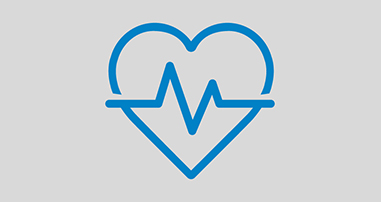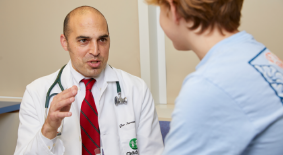Pulmonary artery disease, also known as pulmonary vascular disease, is a general term for conditions that affect the pulmonary arteries and pulmonary veins—the blood vessels that go between the heart and lungs to supply blood with oxygen. Pulmonary artery disease is often a type of congenital heart defect (CHD) that occurs at birth when a child’s blood vessels in the heart or lungs don’t develop as they should. In some cases, pulmonary artery disease can be acquired, meaning it develops over time.
Types of pulmonary artery disease
- Isolated pulmonary artery of ductal origin: Also known as IPADO, this is a rare heart defect that is commonly associated with tetralogy of Fallot and truncus arteriosus. It is a condition where the pulmonary artery, which carries blood from the heart to the lungs, starts from the ductus arteriosus instead of the pulmonary trunk.
- Major aortopulmonary collateral arteries: Also known as MAPCAs, this is a congenital heart defect in which the arteries that supply blood to the lungs are underdeveloped. Abnormal arteries develop to serve as alternate pathways.
- Pulmonary artery disease associated with Alagille syndrome: A genetic condition that affects a variety of organs, Alagille syndrome typically causes narrow heart valves that restrict blood flow.
- Pulmonary vascular disease associated with Williams syndrome: A rare genetic disorder that affects many parts of the body, it can result in a narrowing of the aorta or compromised blood flow to the coronary arteries.
- Tetraology of Fallot: A complex congenital heart defect that involves multiple structures of the heart, tetralogy of Fallot includes a ventricular septal defect (VSD), overriding aorta, pulmonary stenosis and ventricular hypertrophy.
Because pulmonary artery disease can be caused by a variety of conditions, symptoms may vary, and some patients may not have symptoms at all. If they do occur, symptoms of poor pulmonary artery function may include chest pain and passing out (syncope). Additionally, some patients may have a heart murmur, which is an abnormal sound of blood flowing through the heart and blood vessels.

Nathan’s Story
Diagnosed With Pulmonary Artery of Ductal Origin, Nathan Tackled Open Heart Surgery
Watch his storyThe Pulmonary Artery Reconstruction Program at the Children’s Healthcare of Atlanta Heart Center specializes in the diagnosis, treatment and management of complex pulmonary artery disease in infants, children and teens. One of just a few dedicated heart programs in the country that provides surgical treatment for patients with complex pulmonary artery disease, our surgeons have expertise in advanced treatments. We bring together a multidisciplinary team of cardiothoracic surgeons, interventional cardiologists, intensivists and anesthesiologists, as well as outpatient cardiologists, pulmonologists, otolaryngologists, geneticists and researchers who coordinate care to help patients achieve the best possible outcome.
Why choose the Children’s Heart Center?
If your child has been diagnosed with pulmonary artery disease, you can count on us to provide them with comprehensive, high quality care they deserve. This includes:
Excellent Surgical Outcomes
You can be confident entrusting our heart center with your child’s care. Our cardiothoracic surgeons are skilled in treating all kinds of heart conditions, including some of the most rare and complex, with excellent outcomes.
Advanced Research for New Treatments
We have a robust research lab that is actively looking into the causes of pulmonary artery disease and is dedicated to developing innovations, advanced techniques and new approaches to care that will lead to better outcomes for patients. We keep our patients informed of the latest emerging treatments.
Comprehensive Support Services
We understand that treatment for pulmonary artery disease is a lifelong journey. We offer long-term follow-up and a variety of support services for patients, siblings and families.
Pediatric Pulmonary Artery Reconstruction
-
Our Approach
See how Dr. Bauser-Heaton channels her empathy as a mother and heart disease patient herself to provide advanced care for kids with pulmonary artery disease.
If it is suspected that your child has pulmonary artery disease, they will be referred to a pediatric cardiologist who will perform a variety of tests that may include:
An electrophysiology study is a minimally invasive procedure in which a pediatric cardiac electrophysiologist guides a small, thin tube called a catheter through a patient’s vein to their heart to record its electrical activity. Electrophysiology studies are offered in the catheterization lab at the Children’s Heart Center.
A chest x-ray uses a small dose of radiation to create images of the heart, lungs, blood vessels and bones of the chest.
An echocardiogram is a test that uses ultrasound waves to create accurate pictures of your child’s heart to look at its structure and see how it is functioning.
A fetal echocardiogram is a highly sensitive ultrasound test that provides high-quality, accurate images of an unborn baby's heart. Typically, doctors will perform this test to assess the fetal cardiovascular system when a fetus is at 18-24 weeks.
Our Pulmonary Artery Reconstruction Program understands that that every pulmonary artery abnormality is different, so we approach each patient with an individualized treatment plan. While heart surgery is typically required for patients with complex pulmonary artery disease, we collaborate across multiple specialties in real time to create comprehensive care plans that are specific to each patient’s needs. Our program is unique because our cardiothoracic surgery team team uses advanced surgical procedures to treat the most complex areas of pulmonary vascular disease well past the midpoint of the lung, where the pulmonary vessels and arteries enter and leave.
After surgery, we create plans for feeding, optimal lung health, surveillance of blood flow distribution and timing of reintervention to maximize healing and shorten hospital stays so our pediatric patients can get back to being kids.
Long term care after pulmonary artery reconstruction
Children in our Pulmonary Artery Reconstruction Program are often able to lead normal lives after heart surgery. In many cases, they have normal pulmonary artery pressures and healthy ventricles, with a full repair of their vascular disease. Most patients will need to see a pediatric cardiologist each year to monitor their heart health.
- Holly Bauser-Heaton, MD, PhD, Co-Director, Pulmonary Artery Reconstruction Program
- Subhadra Shashidharan, MD, Co-Director, Pulmonary Artery Reconstruction Program
- Asaad Beshish, MD
- Laura Downey, MD
- Megan Durham, MD
- Lazaros Kochilas, MD
- Joshua Rosenblum, MD, PhD
- Timothy Slesnick, MD
- Neill Videlefsky, MD
- Stephanie Wechsler, MD
- Rosemary Gray, RN, Clinical Nurse Coordinator
Learn about common heart problems and when it's time to see a pediatric cardiologist
Contact Us 404-256-2593






